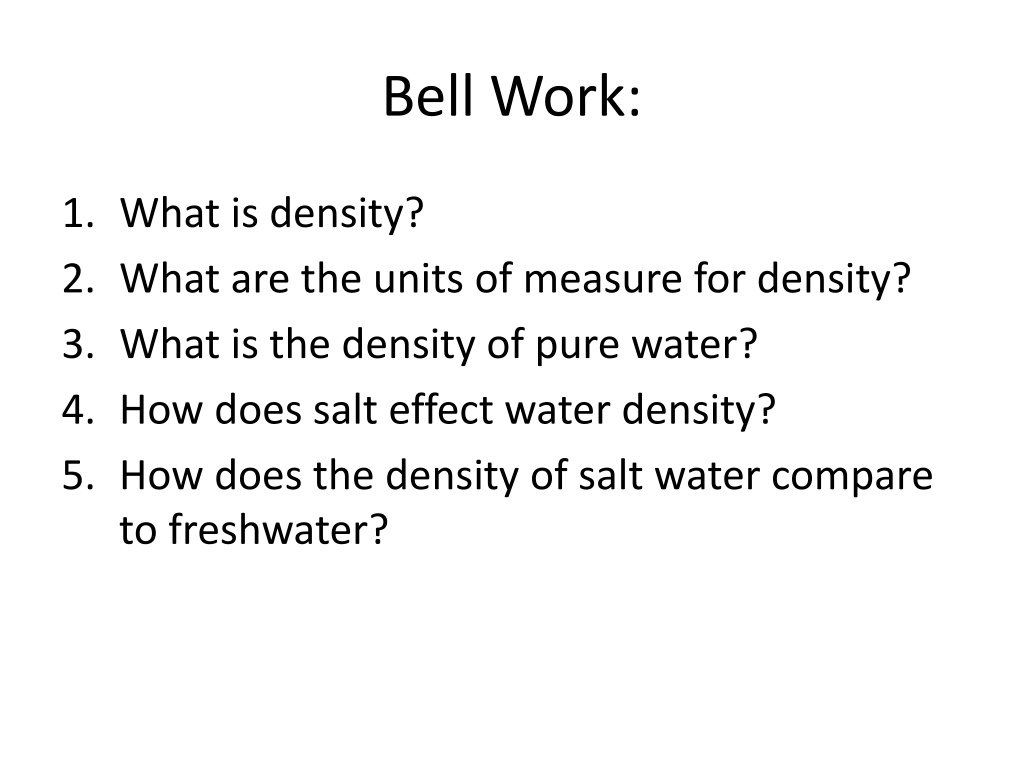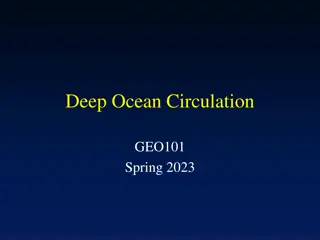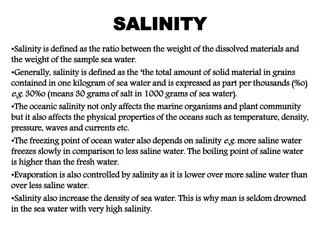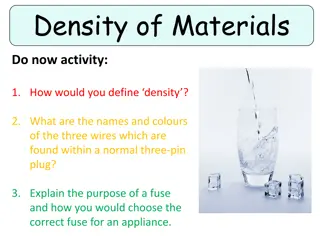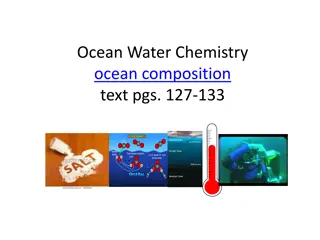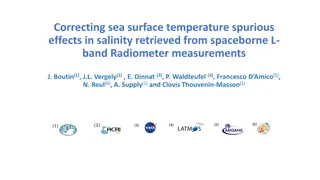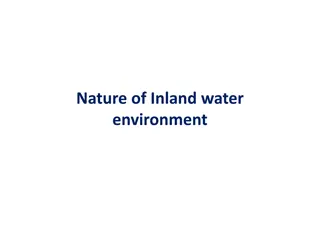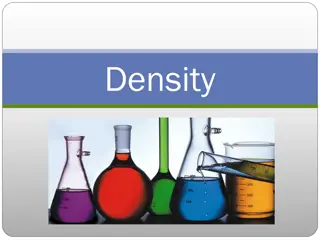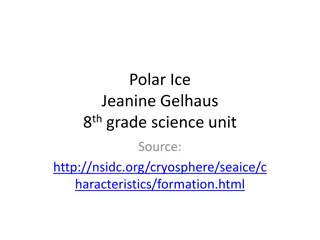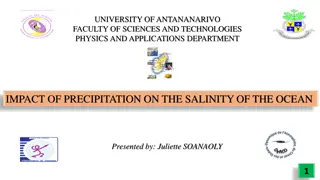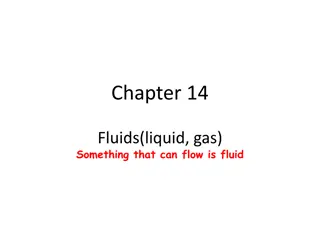Understanding Water Salinity and Density
Water density is a crucial property influenced by factors like salinity and temperature. Saltwater is denser than freshwater due to dissolved substances, affecting the buoyancy of marine environments. Salinity levels vary in different bodies of water, impacting ecosystems and supporting diverse organisms. Learning about density and salinity helps understand water properties and their influence on aquatic life.
Download Presentation

Please find below an Image/Link to download the presentation.
The content on the website is provided AS IS for your information and personal use only. It may not be sold, licensed, or shared on other websites without obtaining consent from the author. Download presentation by click this link. If you encounter any issues during the download, it is possible that the publisher has removed the file from their server.
E N D
Presentation Transcript
Bell Work: 1. What is density? 2. What are the units of measure for density? 3. What is the density of pure water? 4. How does salt effect water density? 5. How does the density of salt water compare to freshwater?
Common Water Measurement What components of a water environment can we change to increase or decrease the number of organisms that can exist in it? 1. 2. 3. Temperature pH Specific conductance/Total Dissolved Solids Hardness/Mineral Content Turbidity/Suspended Sediment Salinity/Buoyancy Dissolved Gasses: Oxygen, Carbon Dioxide, Nitrogen 8. Plant Nutrients: Oxygen Cycle; Carbon Cycle; Nitrogen Cycle; Phosphorus Bacteria 9. 4. 5. 6. 7.
CWM Objectives: The student should be able to: Explain how salinity relates to water s universal solvent property Analyze the relationship between salinity and water density Give factors that influence ocean salinity Describe how salinity affects specific conductance
Water is an amazing solvent! Water is an amazing solvent. It is able to retain large amounts of salts and other materials in solution. Salts change the properties of water. For example, when salt is dissolved in water the freezing point of water is lowered. Fresh water freezes at 0 C., whereas normal seawater freezes at 1.9 degrees C.
Water Salinity vs. Density Seawater has a higher density than fresh water. Sea water contains many dissolved substances These add mass to the water Producing a greater mass per unit volume, or a density, higher than that of pure water. Salinities near shore vary due to the addition of fresh water by rivers and rainfall. Low salinities occur in polar seas where the salt water is diluted by melting ice and continued precipitation Local conditions of temperature and water circulation may also increase or decrease salinity.
Salinities vary in different bodies of water. Red Sea = 40 o/oo Mediterranean Sea = 38 o/oo Average Seawater = 34.7 o/oo Black Sea = 18 o/oo Baltic Sea = 8 o/oo
Estuary An estuary is a body of water where incoming seawater is diluted with fresh water coming from the land. Because of differences in density between fresh and salt water: salt water will move upstream in the estuary along the bottom, fresh water will flow downstream along the surface. Some mixing occurs at the interface where fresh and salt water meet. This is called brackish water.
Measuring Salinity The amount of salts dissolved in water is called salinity. Salinity is measured in g per 1000 ml and a special symbol is used: 0/00 by weight. Open ocean water has an average salinity of about 35 o/oo Scientists express quantities of dissolved substances as grams per liter, or 1000 ml. Thus, we use parts per thousand to express salinity Scientists use a variety of instruments to determine the density of water. Hydrometers work on the principle that an object submerged in water must displace a weight of water equal to that of the object itself. Water (or any liquid) pushes on objects placed within them. If the object is lighter than the water it displaces, this force is directed upward and it is called buoyancy.
Electrical Conductivity Another quality of seawater is its ability to conduct electricity. When salts are dissolved in water they dissociate and become ions that carry positive or negative charges. It is the ions that are dissolved in water that conduct electricity. Conductivity increases as the amount of dissolved salts, or ionic content, increases. Oceanographers generally use conductivity meters to determine the salinity of seawater rather than hydrometers because conductivity meters are more sensitive.
